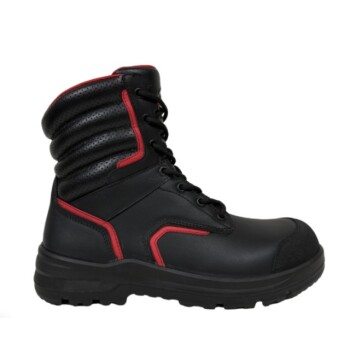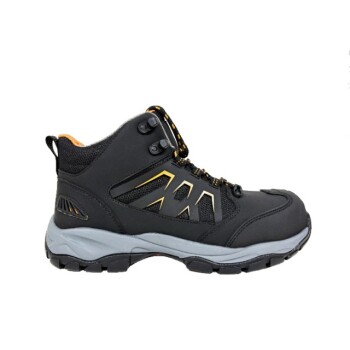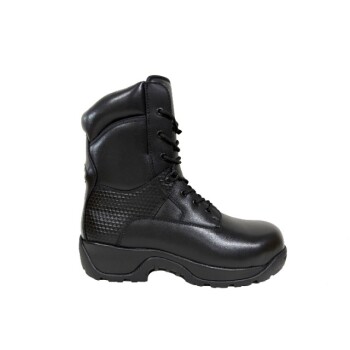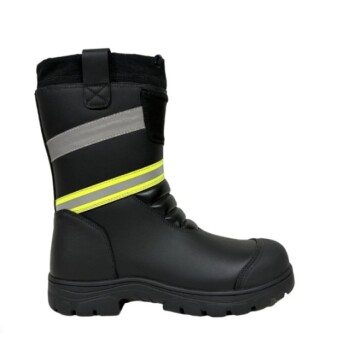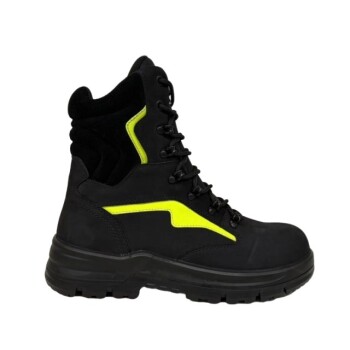Yes, there are notable downsides to steel toe boots. While they provide excellent and affordable protection against impact and crushing injuries, their primary drawbacks are significant weight, poor temperature regulation, and electrical conductivity. These factors can lead to fatigue, discomfort, and unsuitability for certain work environments.
The core issue isn't whether steel toe boots are "good" or "bad," but whether their specific trade-offs are acceptable for your job. They offer maximum protection at a low cost, but sacrifice comfort, convenience, and suitability for specialized environments involving electricity or extreme temperatures.

The Daily Burden: Weight and Comfort
The most common complaints about steel toe boots relate to the daily experience of wearing them for long shifts. The material chosen for protection has a direct impact on the wearer's physical well-being.
The Problem of Weight
The steel cap adds significant weight to the footwear. Over an eight- or ten-hour shift, this extra weight can lead to fatigue in your legs and back, making the workday more strenuous than necessary.
Risk of Blisters and Discomfort
Steel is completely rigid. If the boot is not perfectly fitted, the inflexible steel cap can rub against your toes and foot, causing painful blisters and general discomfort, especially during a break-in period.
Poor Breathability
Steel toe boots, particularly older designs, can be less breathable than their modern counterparts. This traps heat and moisture, leading to sweaty, uncomfortable feet over a long day.
Environmental and Electrical Hazards
Beyond personal comfort, the properties of steel create practical limitations and potential safety risks in specific work environments.
The Issue with Metal Detectors
As a ferrous metal, steel will reliably set off metal detectors. This makes them highly impractical for anyone working in secure facilities, airports, or any location that requires frequent screening.
Conduction of Electricity
Steel is an excellent electrical conductor. This makes standard steel toe boots a significant hazard for electricians or anyone working in environments with a risk of live electrical currents.
Temperature Sensitivity
Steel also readily conducts thermal energy. In cold weather, the steel cap becomes intensely cold, drawing heat away from your feet. In hot environments, it can absorb heat, making your feet uncomfortably warm.
Understanding the Trade-offs: Protection vs. Practicality
To make an informed choice, you must weigh the disadvantages against the clear benefits that have made steel toe boots an industry standard for decades.
Unmatched Impact Protection
The primary purpose of a steel toe is safety, and here it excels. Steel offers robust, reliable protection against heavy impacts and compression, making it ideal for construction and heavy industrial tasks.
Durability and Cost-Effectiveness
Steel is incredibly durable and resistant to punctures. Boots featuring this technology are often the most affordable safety footwear option, providing a high level of protection for a lower initial investment.
A Traditional Technology
While effective, steel toe technology is comparatively old. Newer materials, like composite toes, were specifically engineered to provide similar protection while solving the problems of weight, temperature conduction, and electrical conductivity.
How to Mitigate the Downsides
If the protection and cost of steel toe boots are right for you, several strategies can significantly improve your comfort.
Ensure a Perfect Fit
Never compromise on fit. A properly sized boot ensures there is enough room in the toe box to prevent the steel cap from rubbing against your feet.
Use Quality Insoles and Socks
High-quality insoles can provide essential cushioning and support, offsetting the boot's rigidity. Similarly, cushioned or moisture-wicking socks can prevent blisters and improve overall comfort.
Break in Boots Gradually
Avoid wearing a new pair of steel toe boots for a full shift right away. Wear them for a few hours at a time over several days to allow the boot materials to soften and conform to your foot.
Making the Right Choice for Your Goal
Ultimately, the best safety boot is the one that provides the necessary protection without creating unnecessary burdens for your specific work.
- If your primary focus is maximum impact protection and budget: Steel toe boots offer a robust and cost-effective solution perfectly suited for heavy-duty industrial work.
- If your primary focus is all-day comfort and reduced fatigue: You should investigate lighter composite toe alternatives, as the weight and rigidity of steel will be a significant drawback.
- If you work around electricity or in extreme temperatures: Steel toe boots are not suitable due to their conductive properties; you must seek out non-metallic safety toe options.
- If you frequently pass through metal detectors: The daily inconvenience makes a composite toe boot a far more practical choice.
Choosing the right footwear is about matching the tool to the task and ensuring your safety and comfort throughout the workday.
Summary Table:
| Disadvantage | Key Impact | Suitable Alternative |
|---|---|---|
| Heavy Weight | Leg and back fatigue over long shifts | Lighter composite toe boots |
| Temperature Conduction | Cold feet in winter, hot feet in summer | Non-metallic, insulated options |
| Electrical Conductivity | Hazardous for electricians | Composite or alloy safety toes |
| Rigid Toe Cap | Potential for blisters and discomfort | Perfect fit and quality insoles |
Find the Perfect Safety Boot for Your Workforce
As a large-scale manufacturer, 3515 produces a comprehensive range of footwear for distributors, brand owners, and bulk clients. Our production capabilities encompass all types of safety shoes and boots, including steel toe, composite toe, and specialized electrical hazard models.
We can help you select or customize the ideal footwear that balances maximum protection with all-day comfort for your specific work environment. Let's enhance your team's safety and productivity.
Contact 3515 today for a consultation and quote!
Visual Guide
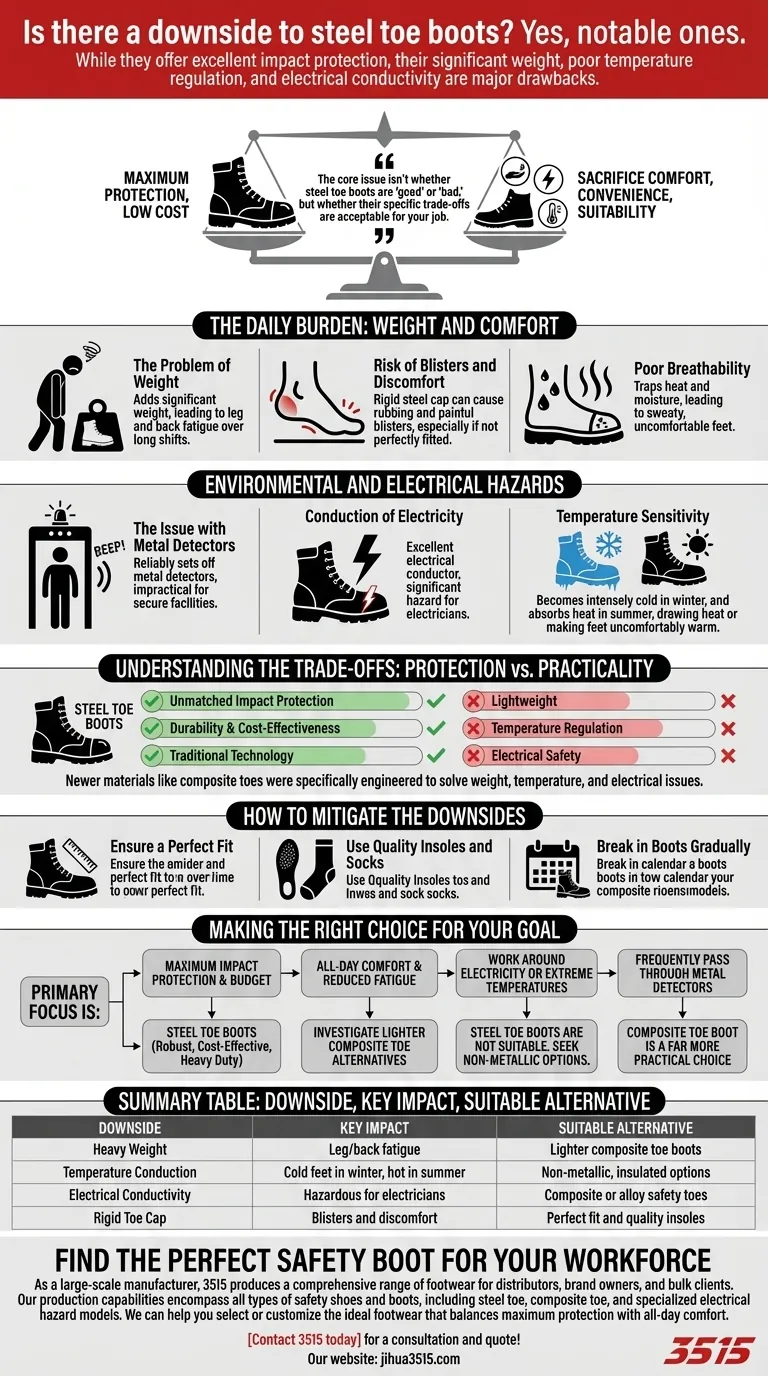
Related Products
- Heavy-Duty Waterproof Nubuck Safety Boots Safety Shoes for Bulk Supply
- Premium Wholesale Waterproof Safety Boots High Performance Protection for Industrial Markets
- Premium Wholesale Wheat Nubuck Safety Boot with Rapid Lacing System
- Premium Sport Style Safety Boots for Bulk Orders
- Premium Grain Leather Safety Boots for Bulk Supply
People Also Ask
- How can you determine the right safety toe boot for your workplace? Match Boots to Hazards
- How should safety toe boots be maintained? Essential Steps for Longevity & Protection
- What organization provides safety standards for work boots? Meet ASTM International, the Key to OSHA Compliance
- What are the different types of safety toe boots available? Choose the Right Protection for Your Job
- What are the characteristics of steel toe boots? Maximum Protection & Key Trade-offs

